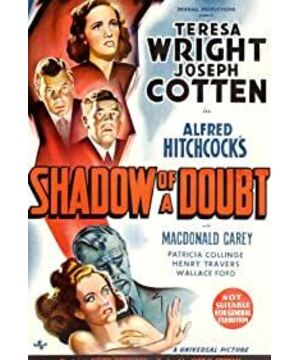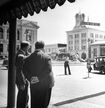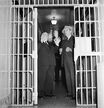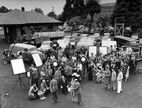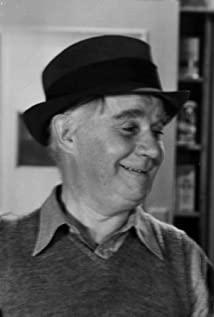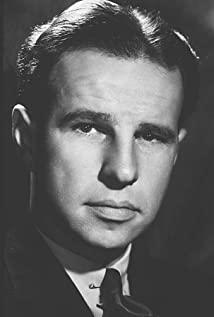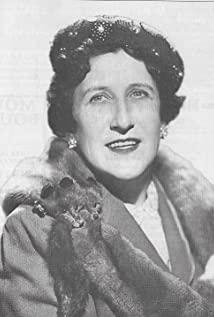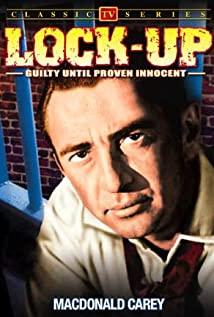Alfred Hitchcock is a universally recognized "master of suspense" and has a prominent position in the history of world cinema. In 1939, he was invited to Hollywood. The filming of "Butterfly Dream" the following year won him the Academy Award for Best Picture of that year. He has directed and produced 759 films and over 300 TV series in his entire life. The themes of the stories are mostly tension, anxiety, fear and peeping, etc. Suspense, plot twists and turns, fascinating, this is not without his young life experience. relation. Hitchcock once told the story of his father being taken away by the police when he was five years old. He was thrown into a small room by the police, with extreme fear. Among the "100 Years of Thriller Movies" rated by the American Film Institute, Hitchcock has 9 of them, and 3 of them are in the top 7 including No. 1. (1)
In Hitchcock's works, suspense usually has many manifestations. He believes that a good movie should occupy the hearts of the audience, so in his works, subjective vision is usually used to make the audience stand from the perspective of the character, let them experience with the character, empathize with the character, and generate psychological identification with the character. . "Destroying Flowers" is one of Hitchcock's most satisfying works. The story takes place in the small town of Santa Rosa in Northern California. Charlie, a young girl with higher education, is not satisfied with the current ordinary life. She is eager to connect with the outside world and do a career. At this time, she is extremely eager to have a career. Uncle Charlie suddenly appeared, giving her a little bit of adjustment to the ordinary life, and giving her some life guidance. Just when she was about to send a report to her uncle, she received a message from her uncle. She was convinced that there was a tacit understanding between herself and her uncle, and her generous uncle gave her a gem ring, which made her intimate relationship even deeper. The sister who loves to read did not show too much enthusiasm for this, she is still immersed in her own reading world. Like her, Charlie’s parents were extremely happy about the arrival of her uncle. As the mother’s only brother, Uncle Charlie left home at the age of sixteen and went home alone. It’s impressive to return home. Until one day, two detectives pretending to be newspaper reporters planned to interview Charlie's family, following them as typical American families. Unexpectedly, Uncle Charlie, who had just appeared from the room and was photographed, suddenly lost his mind and became furious. Charlie and his mother were greatly puzzled. One of the detectives who interacted with her learned that her uncle was most likely the murderer of the widow Meili that newspapers and television had been tracking. Since then, Charlie has been in a dilemma, facing the unbelievable and extremely fearful psychology of the uncle who may be the murderer, and at the same time she cannot predict what will happen if her parents know the truth. She needs to step by step to verify whether Uncle Charlie is the real murderer, and at the same time to prevent him, until the final confirmation that he is the real murderer, and how to get rid of his frame and entanglement deeply affect the hearts of the audience. The theme and storyline of this film are highly recognizable. The subtlety is to use the director's vision to follow the protagonist Charlie a little bit to speculate, find clues, and finally verify the conclusion, as well as how to overcome the mentality of struggle and fear.
When talking about Hitchcock's suspense film, we have to mention "Mugffin"-an important plot technique that drives the development of the story. He believes that it is inappropriate for many viewers to only focus on the content when watching movies. He said that in a good film, the director wants the audience to feel the various emotions he puts in the movie, and follow the characters to experience them one by one, using the director's or role's perspective to find the mystery hidden in the story, that is suspense. Only when the audience is highly emotional can they get the best movie-watching experience. The McGeffen in "Destroying Flowers" is whether Uncle Charlie is a murderer or not. Hitchcock believes that film techniques and sophisticated design can drive the audience's viewing experience.
At the beginning of the film, the chase scene between the police and Uncle Charlie hinted at the suspicion of Uncle Charlie's crime, and the audience has already received preliminary hints from the director's perspective. Then there is a display of the daily family life of Charlie's family. It seems unintentional, but it is actually an atmosphere created by the director's heart to pave the way for the discovery and revealing of the identity of Uncle Charlie's murderer. Many seemingly minor elements in the film have created a suspenseful atmosphere related to the murder, such as the lettered ring given to Charlie by Uncle Charlie, the performance of younger brothers and sisters on the dining table, and the writing on the hands of fathers and friends when they visit. On the cover of a "crime" magazine, Uncle Charlie secretly hid a corner of a murder news newspaper, and furiously faced the visiting "journalist".
Hitchcock emphasized that in addition to the fascinating theme of the story, a good work must also have a good organizational structure, that is, the form. In the film, the scene of the dinner scene is extremely critical. Through the lively dialogue between Charlie and his uncle and the use of photography techniques, Hitchcock creates an extremely tense atmosphere and intensifies the conflict. This scene is also the process by which little Charlie proves that her uncle is the murderer step by step. First through the uncle’s vicious monologue—“These women, these useless women, what do they do? In hotels, in the best hotels, you can see thousands of these women every day. Money drank, eaten, lost playing cards, having fun all day and all night. The smell of copper would only show off jewelry. These terrible... Obese, old-fashioned, greedy woman. "---- Show that a personable uncle started to be rude. Upon hearing these words, Charlie retorted, "But they are still alive! They are also human! "At this moment, the audience was not surprised by the humanistic qualities that Charlie showed to his uncle's viciousness, because the director had laid the groundwork in the previous scenes showing family life. Uncle Charlie refused to forgive him and continued. "Are they? Are they? Charlie? Are they humans or obese, panting animals? What will happen to the old and fat animals? "Uncle Charlie realized in the eyes of Charlie and others that he seemed to be rude, and then turned to smile and became gentle again. Through Uncle Charlie's vicious words and expressions, Charlie seemed to have a glimpse into her uncle's heart. Chu's deep hatred for ladies, with paranoid personality tendencies, is not very chilling. In addition to dialogue, Hitchcock also uses lens language to portray characters and create tension. When Uncle Charlie began to speak, in Amy's After the shot, there was a short shot of Charlie looking at her uncle nervously. As the uncle continued to criticize each other, the shot slowly moved forward. This set of shots fully showed Uncle Charlie’s resentment, and the audience followed the shot. Peeping into his mind. Little Charlie interrupted Uncle, but the camera did not turn to her. Her voice broke out and remained outside the frame, accentuating the cold blood and resentment of Uncle Charlie. When Uncle Charlie turned his head slightly, it seemed to be facing the camera. Talking, a very shocking close-up shot was presented. Until then, the audience seemed to fit in with Charlie, empathizing with her, seeing the resentment on Uncle Charlie’s face. At the same time, the interior setting is also worthy of careful study. Uncle Charlie Sitting at the main table, this detail hinted at his important position in the family, and also increased the psychological burden on Charlie after discovering that her uncle was the murderer. The conflict further escalated----Between Charlie and her uncle , And the transformation of her understanding of the world and human nature deep in her heart. Little Charlie has grown through this important discovery.
Good suspense must have contrast. Hitchcock said that "Destroying Flowers" was the only time he let the characters into the scene, which is one of the reasons why he called this film his favorite work. In Hitchcock's previous movies, most of them are setting up scenes, not real shots on location, and "Destroying Flowers" is a real town life. Sin lurks in a peaceful and beautiful town, which is very different from Hitchcock's previous suspense establishments.
In Hitchcock's subjective photography style, the lens language and editing also contributed to the suspense construction of this film.
He is good at using long shots to create suspense and drama, which are used to imply the feelings of the character at the time. In order to prove that her uncle was the murderer, the long shot when Charlie went to the library to find clues and evidence suggested that Charlie was nervous and extremely panicked. However, in this scene, starting from the fourth shot, the shots became shorter and faster, juxtaposed with the previous set of long shots. When the following shots are getting shorter and shorter, the hearts of the audience are also very anxious with Xiao Charlie, wanting to obtain information as soon as possible to confirm their doubts.
The audience's eyes must be focused on the character. In the opening scene of "Destroying Flowers", Hitchcock uses parallel viewpoints to introduce two protagonists, Charlie and Uncle Charlie. In the six shots, Uncle Charlie is on the right side of the frame, and Charlie’s six shots are in the frame. To the left. Pushing orbiting photography made this opening very stunning.
Multiple overhead shots and overhead shots also add a lot to the film. In the film, when Uncle Charlie was arrested, Hitchcock chose the overhead shot to highlight the effect. He said, "This seems to indicate that we are above the maze, and you can see the exit as well as those who try to prevent him from escaping." This is a typical director's perspective, allowing the audience to participate more in the plot. When little Charlie was in the library materials, she found a related report that the victim's name happened to be the first letter on the ring that Uncle Charlie gave her. Here is a wide angle shot from above, revealing little Charlie's fragility, loneliness and fear. When little Charlie left her parents and Uncle Charlie to attend a speech dinner, she called the detective. Hitchcock used a overhead shot through the escalator upstairs to kill Charlie again from the hands of the criminal uncle. The fear and anxiety of escape are presented directly in front of the audience. Similarly, the upside-down shot can also express the anxiety of the character. After Uncle Charlie realized that Charlie knew that he was the culprit, pacing back and forth in his room was like a back-up shot. In this shot, only the legs and feet appear on the screen. Walking back and forth, the sound of leather shoes on the floor was exactly what Uncle Charlie felt anxious. Uncle Charlie heard passers-by talking about the latest case development. When he learned that the murderer had been found, he jumped upstairs until he realized that his reaction was too violent and suddenly stopped. He slowly turned around and looked at it reluctantly. Little Charlie in the same place. This scene implies that Uncle Charlie knows that Charlie still believes that he is the murderer. The audience together with Charlie once again proved that Uncle Charlie was the murderer's anomalous behavior. At the same time, the audience followed the director's lens and turned around from Uncle Charlie's point of view, and saw the puzzled little Charlie standing in place under the stairs. He injected thoughts into the lens and revealed the suspense to the audience.
Hitchcock's use of editing is also to arouse emotional reactions, insisting on editing with viewpoints, injecting ideas into the character's heart, rather than using narration for uninspired explanations.
"Sweet Hands" features the charming heroine Charlie and the charming villain Uncle Charlie. As we all know, Hitchcock loves slim and beautiful actresses with outstanding temperament. He often chooses sexy blonde beauties for his movies. The heroine Teresa White, who plays Charlie, is elegant, slim and gentle, in stark contrast with the murderer Uncle Charlie's fierce, cold-blooded, tall and sturdy image. Every time Charlie and Uncle Charlie face each other in the camera alone, the contrast is extremely obvious, which makes the comedy even more tense, so that in the unexpected ending, Charlie misses and pushes Uncle Charlie onto the rails. "The behavior expresses understanding and tolerates her guilt. The villain's uncle Charlie is full of charm, not the ferocious image in previous films. He is personable and talkative, which is far from the image of a murderer. It is precisely because of this charm setting that it makes it easier for the audience to understand that Charlie’s initial love for her uncle, the respect of her family for her uncle, and the praise and praise of the people in the town, are also formed with his cold-blooded murderer image. Contrast, exacerbating conflict. As Hitchcock said, "How can he approach his victims if he doesn't have a little charm?"
Uncle Charlie, who wanted to kill, was pushed off the rails by little Charlie who was struggling in self-defense. This unexpected move gave the film an unconventional ending. The master of suspense gave the audience another surprise at the last moment of the film.
View more about Shadow of a Doubt reviews


